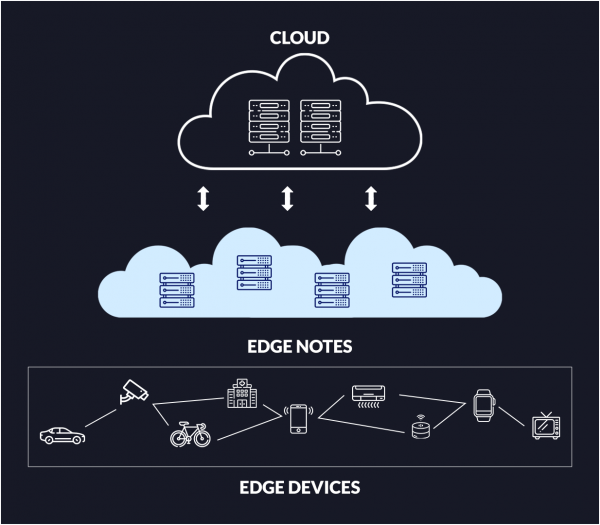

What Do You Understand About Edge Computing?
source link: https://dzone.com/articles/edge-computing-implementation-advantages-and-disad
Go to the source link to view the article. You can view the picture content, updated content and better typesetting reading experience. If the link is broken, please click the button below to view the snapshot at that time.

The range of enterprise technology at present has taken a big leap. The race to ‘achieve more in less time‘ has been the motto that is being followed by many organizations around the globe. Increasing processing capability at the edge has become a popular trend in recent years, providing the groundwork for autonomous systems. As a result, firms may increase efficiency and production while employees can focus on higher-value jobs.
What Do You Understand About Edge Computing?
Edge computing is a distributed/network computing strategy in which processing takes place near the point where data is collected and processed rather than on a centralized server or in the cloud. With this new architecture, you have access to sensors that collect data and edge servers that securely analyze data in real-time and on-site. You may also connect additional devices to the network, such as mobile phones, computers, etc.
Data processing at the edge aids in the quick application of analytics and the deployment of AI capabilities, which is interesting to know. Furthermore, edge computing allows for the seamless transmission of data with no latency and lower network bandwidth and storage needs.
The usefulness of edge computing has been realized at the global level. The below-mentioned statistics say it all.
- According to Gartner’s report, by 2022, 50% of enterprise-generated data would be generated and processed outside of centralized cloud data centers via edge computing.
- Based on IDC’s Worldwide Edge Expenditure Guide, enterprise & service provider spending on software, hardware, and services around edge solutions will expand at a rapid pace through 2025, reaching around $274 billion.
Edge Computing & Relationship With Cloud
Many people question if edge computing is a subset of cloud computing or vice versa. The fact is that edge computing works in tandem with the cloud to provide a customizable solution built on the basis of data collecting and analysis specific to each enterprise.

The edge proves to be appropriate in terms of specific workloads for handling real-time data collecting and processing. Simultaneously, the cloud aids in the provision of a centralized site for large-scale analytics. They work together to provide real-time insights on performance and enable projects like machine learning.
Why Is Edge Computing Gaining Popularity?
- Supports the automation of all business processes
- Motivates operational capabilities
- Presents a less costly strategy to achieve scalability
- Better performance & security across all devices
- Lowers bandwidth to offer low transmission cost
Advantages of Edge Computing
- Improved security by dispersing processing and storage across a wide array of devices
- Edge computing offers improved speed and lower latency to permit faster data processing
- Delivers a cost-effective path to scalability and adaptability, thereby permitting businesses to enhance their computing abilities
Disadvantages of Edge Computing
- For a business to stay on track, data is the king in every manner. When the data/information is gathered at the edge server, it becomes imperative to thoroughly check for compliances & regulations.
- The networked architecture of edge computing increases known attacks. Such a system is susceptible to security flaws and malware infiltration.
- As more data is secured at the edge, more computers are required. As a result, the bandwidth must be increased. The implementation of edge computing necessitates the balancing of network bandwidth.
How Is QA Crucial in Edge Computing?
The tiered architecture of edge computing involves a lot of components that are interdependent. This includes:
- Edge software
- Edge hardware
- Edge gateway
- Interconnection
- Cloud
- Data syncing
The value of Quality Assurance (QA) may be evident during the authentication of the functionality for each of the components mentioned above and further testing to ensure that they are operating in harmony as part of an integrated structure.
Some of the testing activities which are performed on edge components are:
- Unit testing
- API testing
- Performance testing
- Database testing
- Integration testing
- Security testing
You can further get better clarity about the use cases of edge computing and observe its presence in our daily lives, as well as the genius of this intriguing computing paradigm.
Recommend
About Joyk
Aggregate valuable and interesting links.
Joyk means Joy of geeK